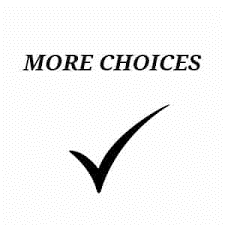 Several months ago, I was sitting at a conference table with a prospective client, talking about the process needed to create our Donor Impact Portfolio. The Donor Impact Portfolio, when it’s complete, is a list of all the organization’s programs and projects, broken out by every category and sub-category of the non-profit’s mission, and it includes all the overhead costs.
Several months ago, I was sitting at a conference table with a prospective client, talking about the process needed to create our Donor Impact Portfolio. The Donor Impact Portfolio, when it’s complete, is a list of all the organization’s programs and projects, broken out by every category and sub-category of the non-profit’s mission, and it includes all the overhead costs.
The purpose is to take that information and create donor offers so that major gift officers can inspire and challenge donors to invest in them.
It’s a lot of work, and it involves getting program people, finance staff, and leadership involved.
Well, the Development Director was skeptical. She claimed that donors to her organization gave to just four areas at their organization. “Our donors really only care about these four areas; going through this DIP exercise would be a waste of time.”
I was skeptical of her response. I mean, this non-profit had quite an extensive number of services. And, quite frankly, I thought the real reason behind this comment was that she didn’t actually want to do the hard work of figuring out all the organization did.
I said, “Okay, what if we went into your database and looked at what your major donors’ passions and interests are? This way we can determine if your donors only give in those four categories and, if they do, then we don’t really need to do this exercise.”
The Development Director agreed, and she had her staff figure out how many different categories of work their major donors were interested in.
After the assignment was completed, they came back to reveal that their major donors’ passions and interests boiled down to 27 different program categories or sub-categories of work the non-profit was involved in. 27!!!
The Development Director was surprised, and she agreed to go through the process to understand what the actual cost of each of those programs was, so they could turn them into great offers at much higher dollar handles for donors to fund.
What this experience proved to us again is that donors really do have specific passions and interests as it relates to everything you do. You may care for the homeless, but some donors want to help a specific area of the city you do this in, or they want to provide funds for feeding versus housing. Just telling a donor you help the homeless isn’t going to be specific enough.
Donors want choices because they have specific desires on how they want to give. And the more specificity you can give them, the more they want to give. Why? Because it fulfills a need and desire in the donor.
But it takes hard work to get the information you need on those specific programs. If you call your organization a donor-centered organization, then you’ll do the necessary hard work – because your work is ultimately to help your donor find joy by connecting their interests and passions with everything your organization does to change the world. (Tweet it!)
The hard work you do today will pay off tomorrow.
Jeff
Search Blog Posts




0 Comments